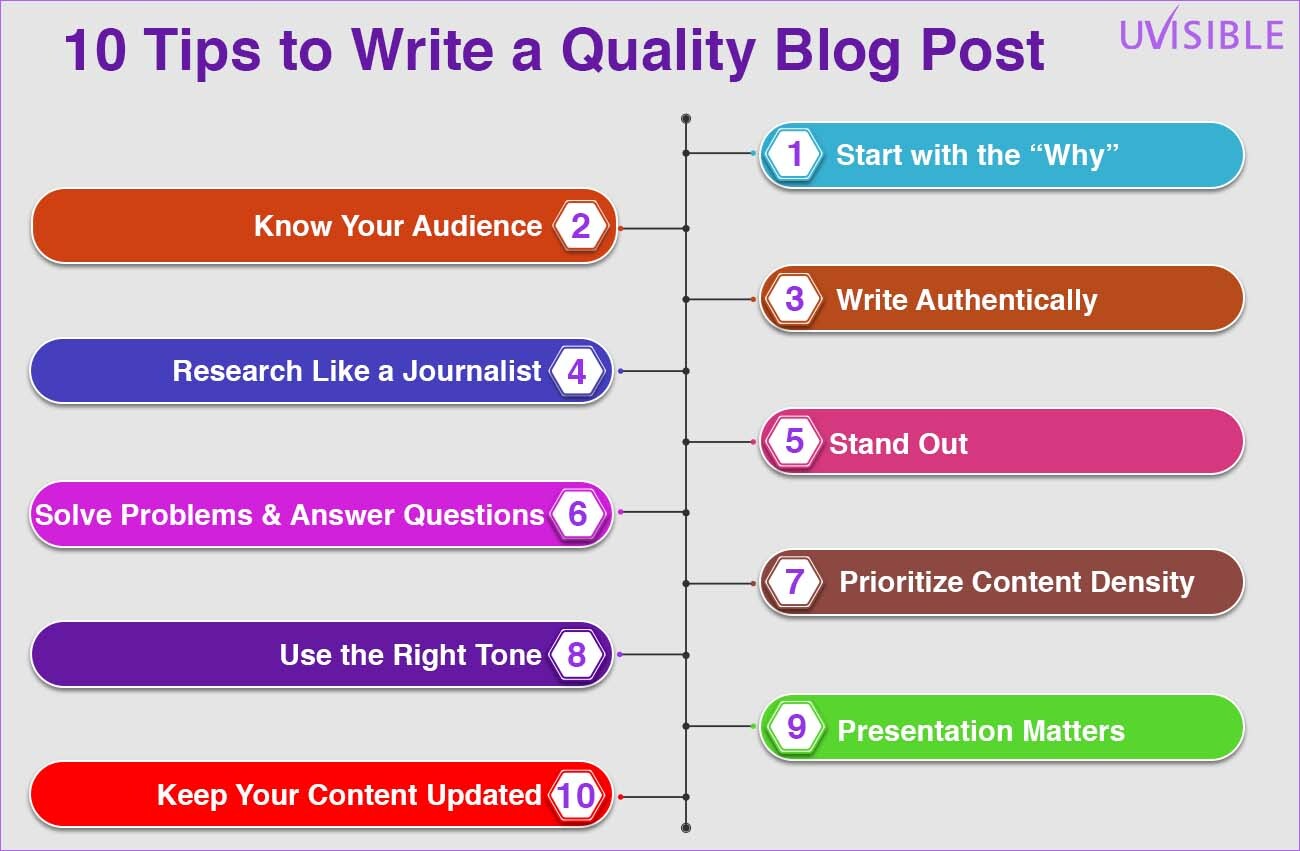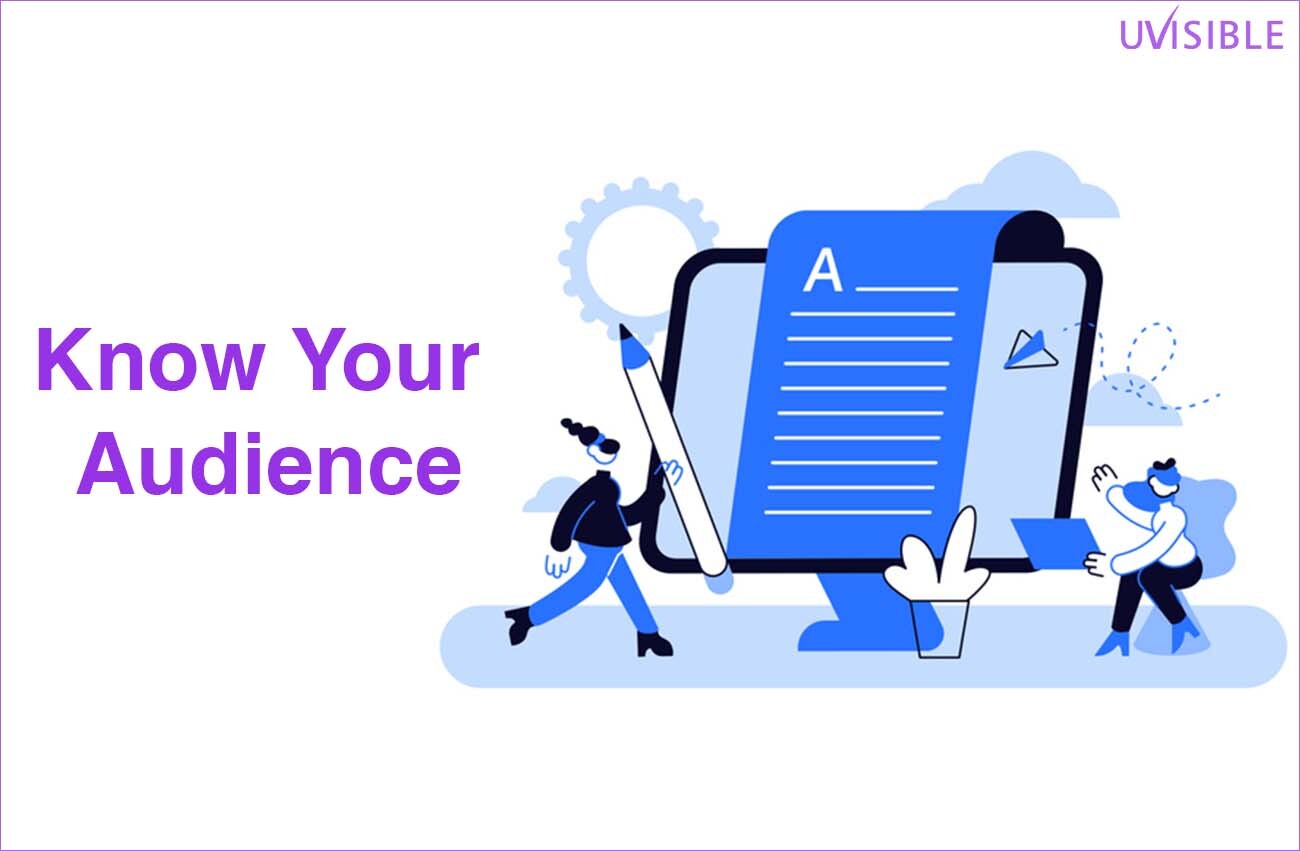Content writing isn’t just about writing what is in your mind or saying what is in your manager’s mind.
It is so much more than that!
Content writing isn’t just about copy-pasting other’s writeups but crafting something original and unique.
Unlike every other content writer, don’t become bored while writing a blog because it won’t help you.
Good content writing forms the foundation of effective content marketing strategies.
If you continue reading this blog until the end, you will be ready to write a blog post with everything to drive readers’ attention.
Because content requires serving a specific purpose, such as shares, links, or conversions.
Quality content requires-
- All Device Compatibility
- Usefulness and Authority
- Address Issue
- Feel Empathetic
- Unique and Customized Solution
Stay ahead of your competition and learn to create content that helps build authority in your niche, engaging your readers, and achieving your blog’s goals.
Here are the 10 actionable tips for you to learn “how to write a high-quality blog post”.
10 Tips to Write a Quality Blog Post

#1 Start with the “Why”
For example, you write a blog on “budget-friendly travel tips” and begin writing with general travel tips.
Well, stop right there because this won’t do any good for you!
No one wants to read anything vague, which is useless.
You need to create a blog that addresses objective and specific reader problems.
For example, a blog that shares “tips to plan a trip to Niagara Falls under $200” will perform better since it addresses a specific problem and objective.
A precise title and valuable content will ensure the right direction of content.
To attract a larger audience to your blog, you can address the most common issues, such as affordable hotels, cheap flights, and more!
#2 Know Your Audience

Writing isn’t about adding information to a document and uploading it.
It requires a purpose. Purpose to address which set of audience!
Every content is not for everybody, so start writing specifically for the audience you want to address.
For example, if your audience is mid-level marketers looking for advanced SEO tips, you need to understand your audience first.
You can profile your audience by persona building, including reader demographics, pain points, behavior, and content preferences.
Since your audience is mid-level marketers, they must understand digital or SEO terms like schema markup or canonical tags. Use them in your content.
You should use appealing images such as screenshots of Google Search Console.
Create a more specific title.
For example, instead of “SEO Tips,” write “Advanced Schema Markup Tactics to Dominate Local SEO in 2024”.
Your target audience will know what exactly you are talking about.
#3 Write Authentically

Your content should be authentic to build trust among readers.
For example, if you are writing a blog on healthy eating but are not an expert nutritionist, you can choose the following instead of faking expertise.
You can start by saying, “As someone who has been following a healthy diet for years with different meal preps, I found the best tips to make your meals healthy on a busy day.”
If you write content for clickbaits, it’s going to fail.
For example, if you write, “This diet guarantees weight loss,” your content won’t work.
Instead, write, “While every diet has different nutrition, the Mediterranean diet has always been promoted for health and weight management by different studies”.
Google highly values authenticity in content, whether it’s written for search engines or SEO purposes.
Blog writing is crucial for boosting rankings, and high-quality content is a key metric for effective SEO services.
#4 Research Like a Journalist

Your content should be well-researched, and facts should be quoted from renowned journals.
For example, your subject today is to write about “The Impact of Remote Work on Productivity.”
You can take facts and statistics from renowned sources like Standford, which shows a 13% productivity boost among remote workers, which will boost your blog’s credibility!
Always fact-check your stats before quoting them in your blog!
You can also quote famous researchers and experts who have researched in a similar field to enhance the depth and credibility of your blog.
#5 Stand Out

Your writing should have something that makes you stand out from the competition.
For example,
You are writing a blog on “Fitness tips for Beginners”, but there will be enormous results on the internet for the same.
You can stand out by giving it a creative twist.
Instead of common tips, make it specific by adding “How to Build a Fitness Routine with No Equipment in 15 Minutes a Day.”
You can appeal it emotionally by beginning the blog with a personal anecdote.
You can say, “When lockdown hit all of us, working out becomes tough. However, I found these 5-minute exercises that can be done in your room. It kept me active and improved flexibility and stamina throughout the lockdown.”
Also Read – SEO Copywriting for Beginners: Ultimate Guide
#6 Solve Problems and Answer Questions

Your blog must address the critical problem with an accurate and detailed answer.
For example,
If you write a blog on “How to manage work-life balance effectively”, you must reply to “how” with practical answers.
You can create a structure to answer the problem systematically.
To begin with, you can address the pain point by saying, “Do you feel like there are never enough hours in the day?”
Once you hit the pain point, ensure that you offer practical solutions such as-
- You can differentiate tasks based on urgent vs. important (Eisenhower Matrix).
- You can use apps like Notion or Trello.
- You can advise them to break their tasks into – Do Now, Schedule, Delegate, and Eliminate.
#7 Prioritize Content Density

Content with vague information and no facts & figures is considered low-density content. You Do Not want that on your website!
Ensure to creation of evergreen content with facts, figures, enriched information, and everything that keeps the reader hooked.
In short, create a high-density content.
For example,
You are writing a blog on “tips to save money”.
Instead of writing like “save money by cooking at home. Eating out can be expensive”.
According to a Consumer Affairs survey, “Cooking at home can save you around $10 per meal compared to eating out.
This way, your advice is backed up with facts and provides more value to the readers.
#8 Use the Right Tone

Your tone should not have anything that can hurt readers’ feelings or values.
It also should depend on your target platform, i.e., Instagram or LinkedIn.
Use a sensitive, friendly tone with your readers to understand and solve their problems if posting on platforms like Instagram.
On the other hand, platforms like LinkedIn stick to a formal or professional tone.
For example,
If you are writing a blog on “Mindfulness for Parents.”
For Instagram, you can use a tone like, “Being a parent is like everyday war. We feel you, and that’s why this five-minute read can become your secret weapon for right parenting.”
But for LinkedIn, your tone should be like, “Studies have suggested that if working parents start mindfulness practices, they can reduce stress and improve focus.”
#9 Presentation Matters

You don’t want your blog to look unappealing and blend.
It needs visuals and an appealing presentation to capture the reader’s attention.
For example,
If you are writing a blog on “Best Hiking Trails in the US.”
Instead of writing like, “(names of the trails) are the best 5 trailers in the US”.
Write like “subheadings- top 5 best trails in the West Coast” and break the rest into bullet points such as “Yosemite National Park – *“Trail length: 7 miles. Difficulty: Moderate.”
Don’t forget to add an image of each trail.
#10 Keep Your Content Updated

If you are refreshing your existing blog, for example, “Top Content Marketing Tools of 2022”.
No one will read it with this title because it is outdated.
Begin to refresh by updating the title and tools that are no longer good and add new tools.
Key Takeaways

Writing a high-quality blog takes work and has some fixed rules.
You must focus on more than just word count or publishing frequency.
It is about delivering exceptional values to readers.
Follow these 10 tips to write a high-quality blog:
- Start with a clear purpose.
- Know your audience deeply.
- Write within your expertise.
- Back up claims with thorough research.
- Find your unique angle.
- Solve real problems and answer questions.
- Focus on value, not just length.
- Use the right tone for your audience.
- Present your content effectively.
- Keep your posts updated for long-term success.
If you successfully apply these strategies, there is no way one can stop you from producing a high-quality blog.
Your content will start ranking and get high user engagement.
But remember one thing,
If you want to win in the long term, ensure consistency with quality.
Start implementing these tips today and watch your blog rank high!
If you want quality Content Marketing Services, Consider hiring Uvisible!
About us and this blog
We are a digital marketing company with a focus on helping our customers achieve great results across several key areas.
Request a free quote
We offer professional SEO services that help websites increase their organic search score drastically in order to compete for the highest rankings even when it comes to highly competitive keywords.
Subscribe to our newsletter!
More from our blog
See all postsRecent Posts
- A Guide to Help You Write High-Quality Blog Content November 21, 2024
- 10 Hidden SEO Tips to Outsource Enterprise SEO November 19, 2024
- Google Web Stories Tips and Tricks November 18, 2024








